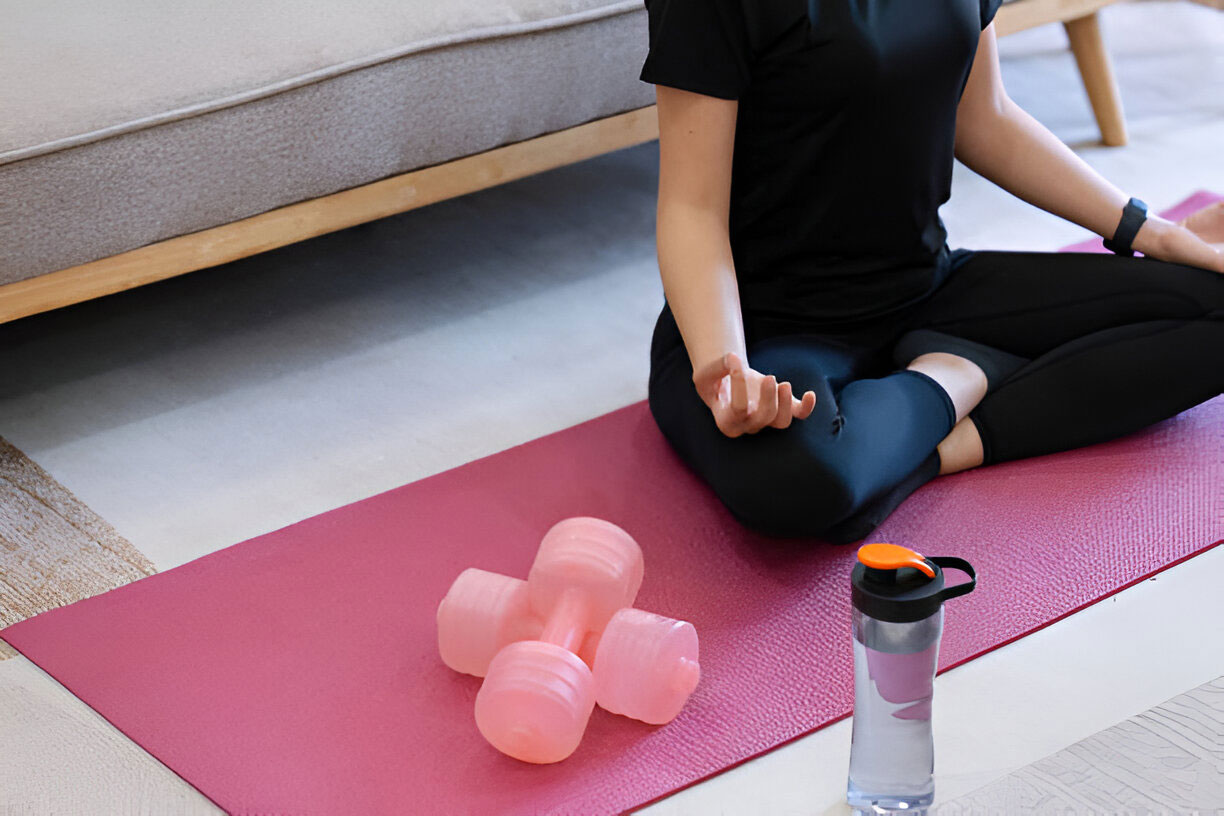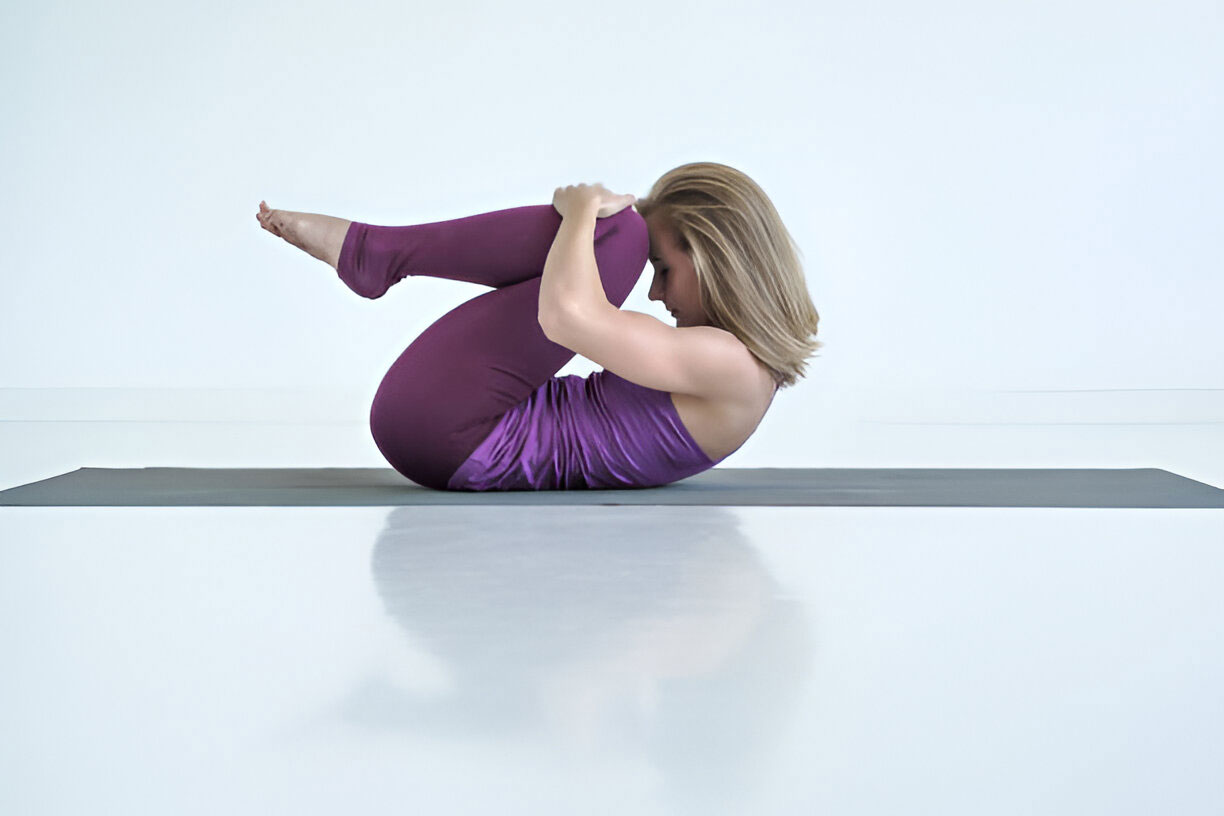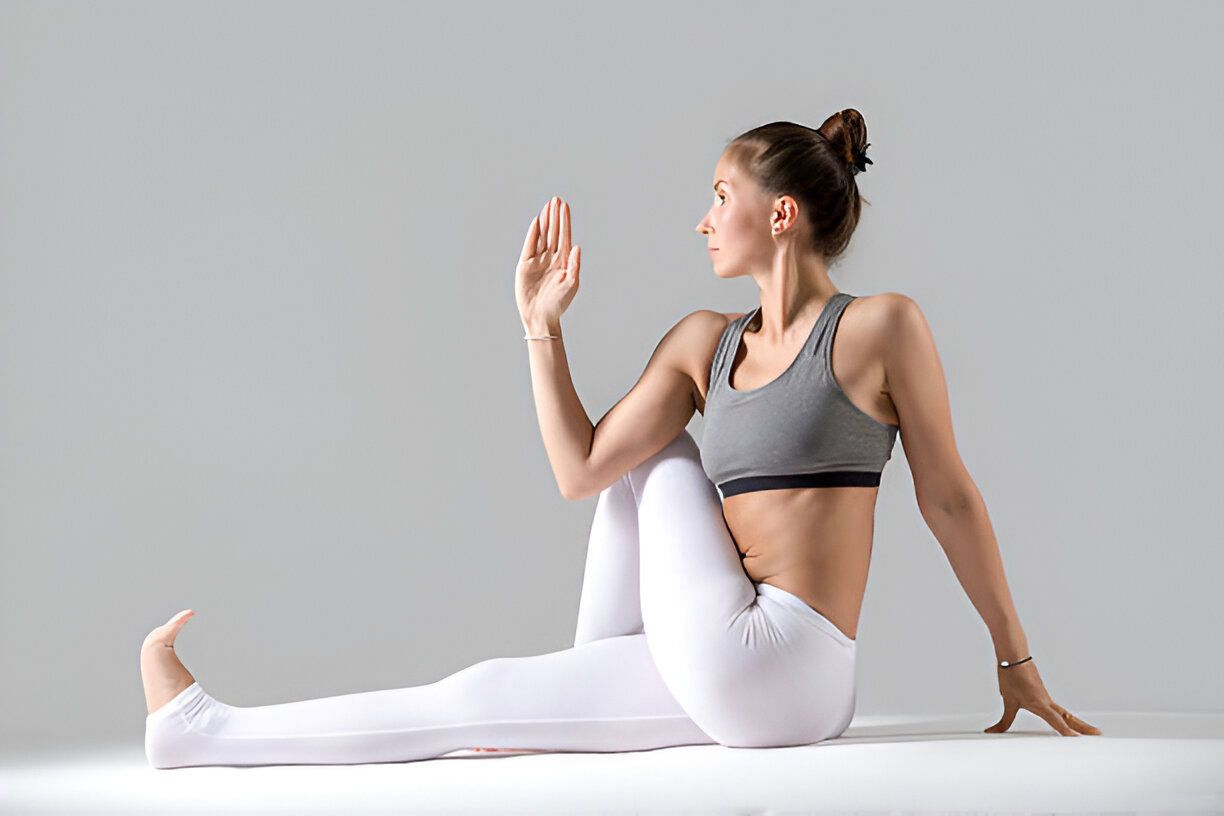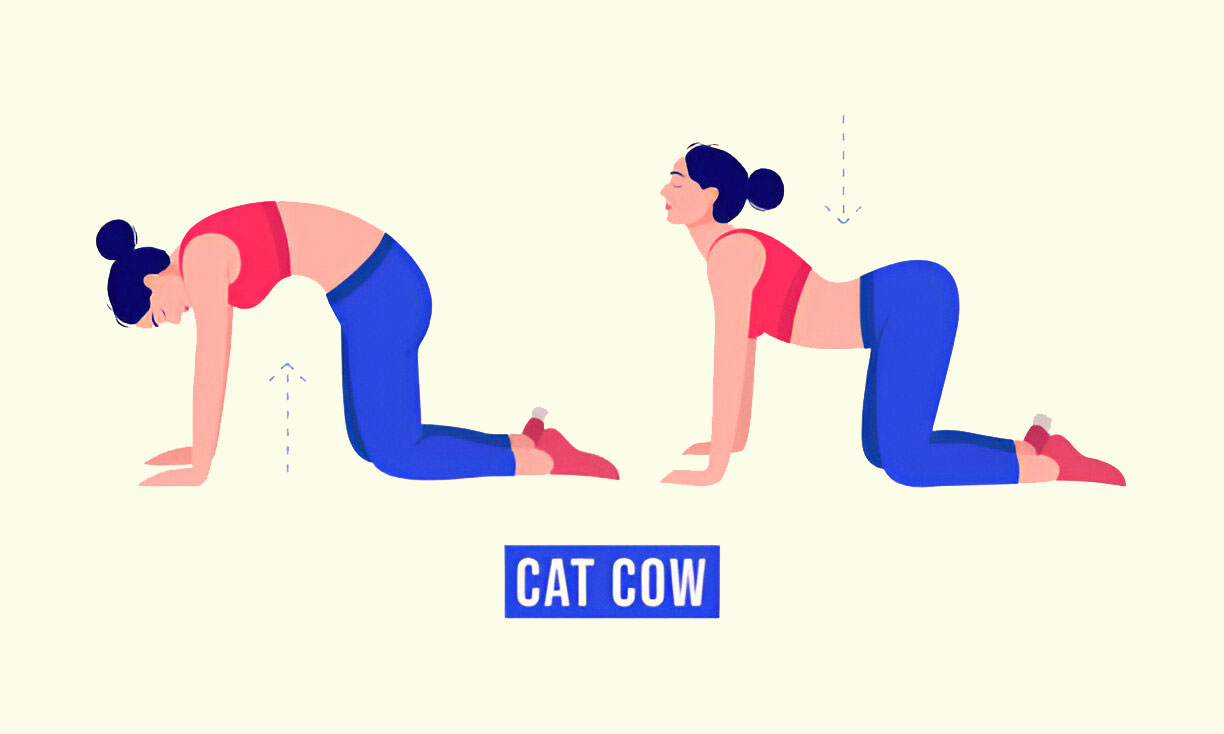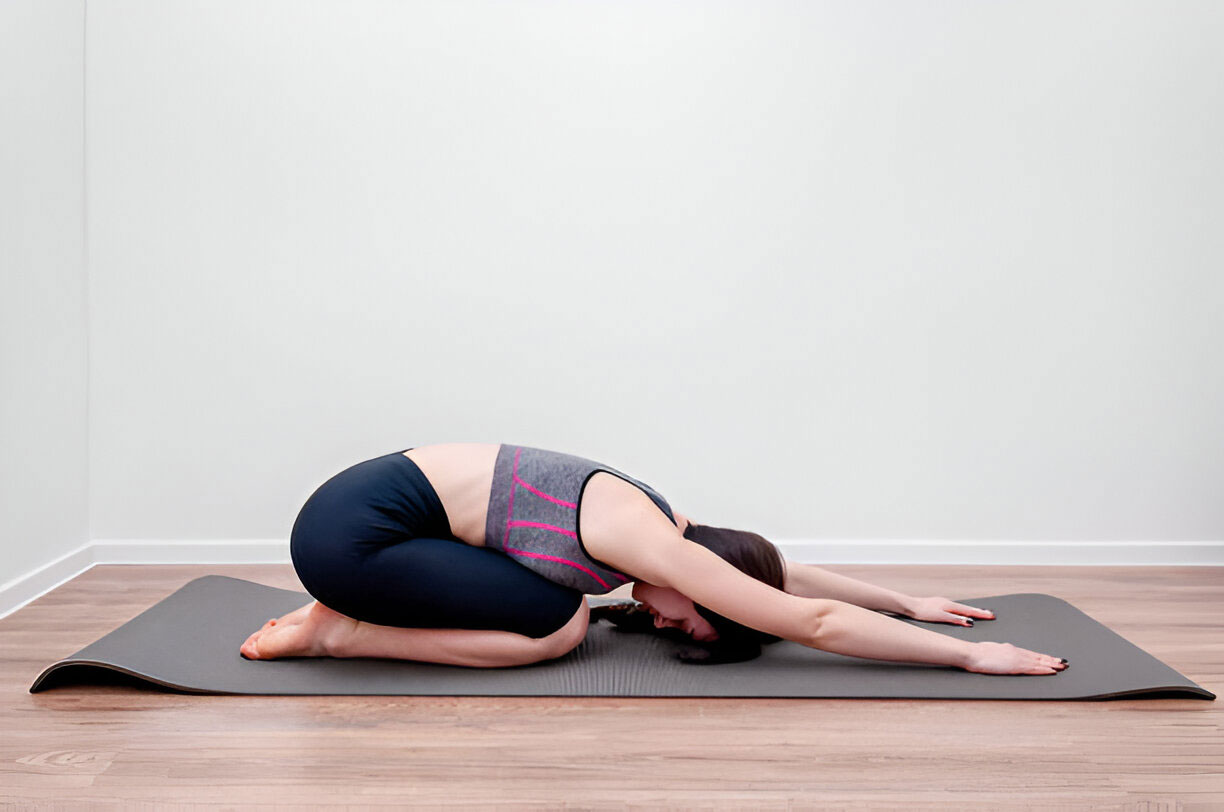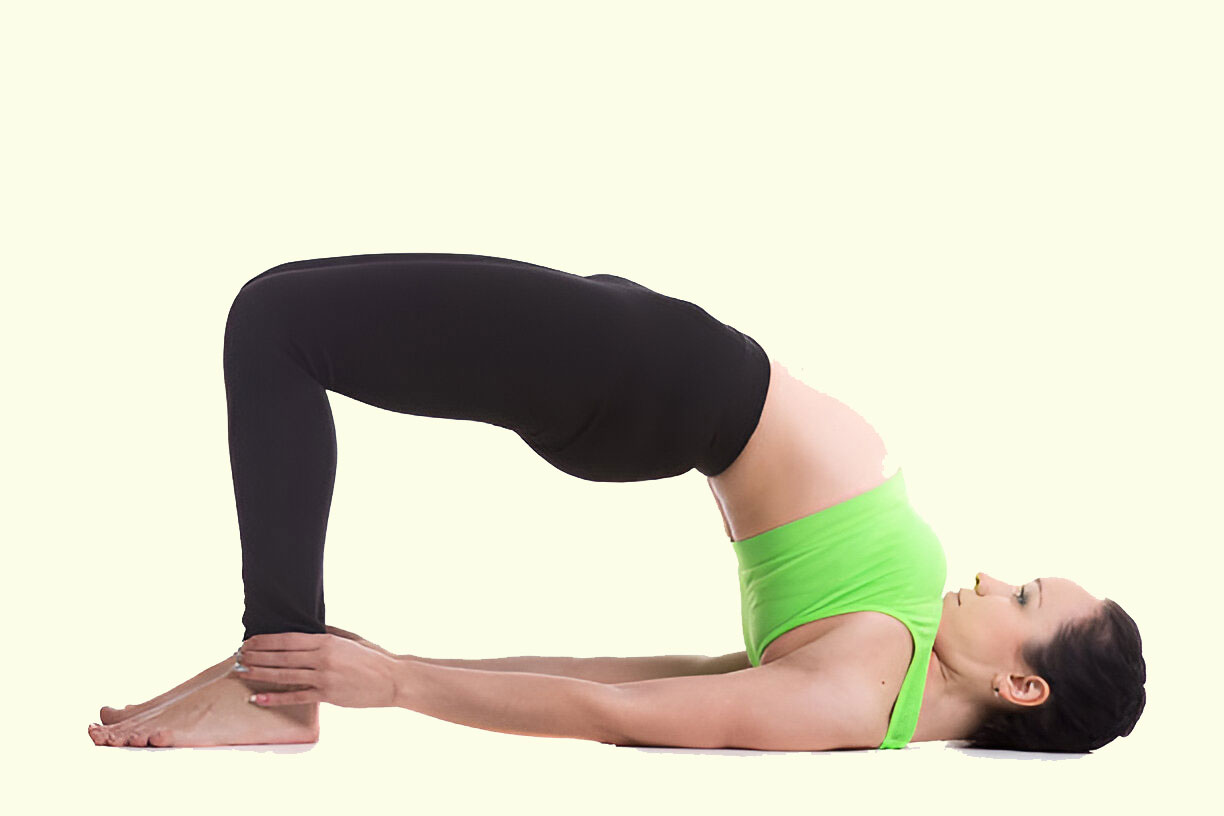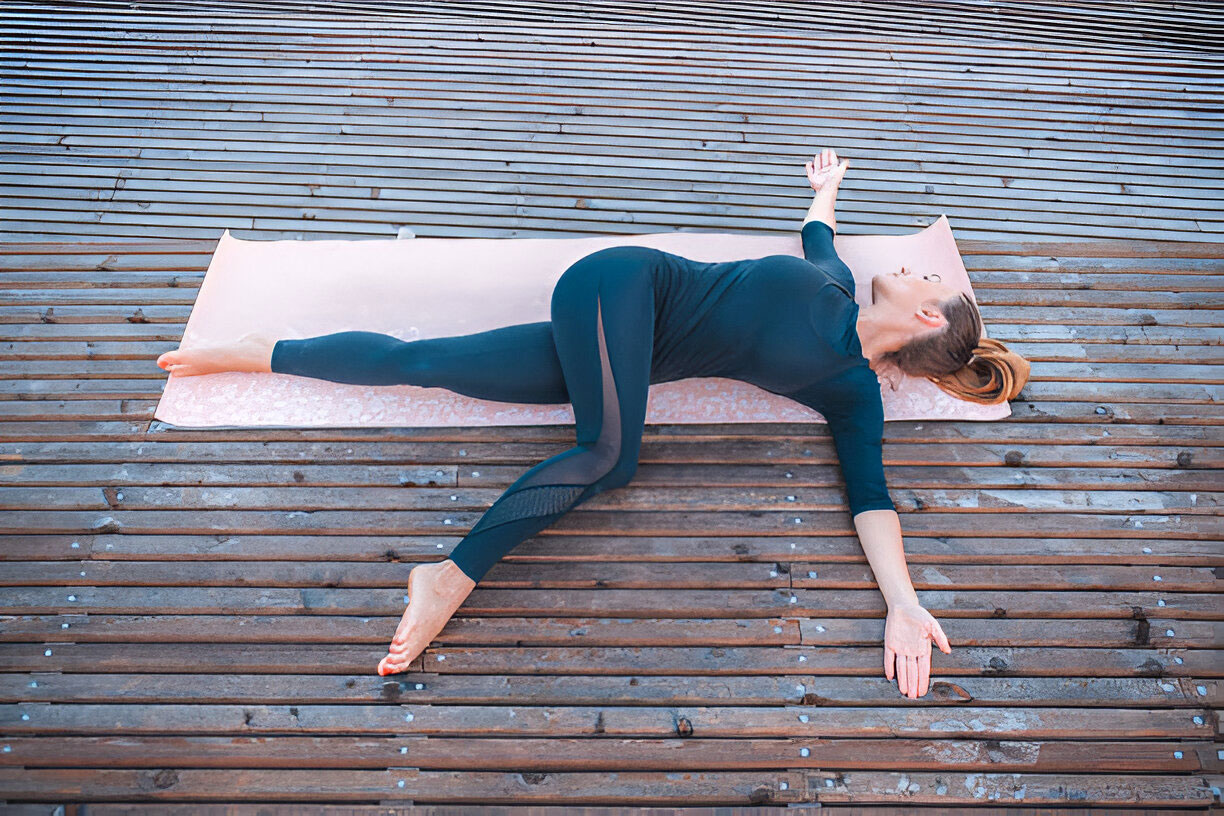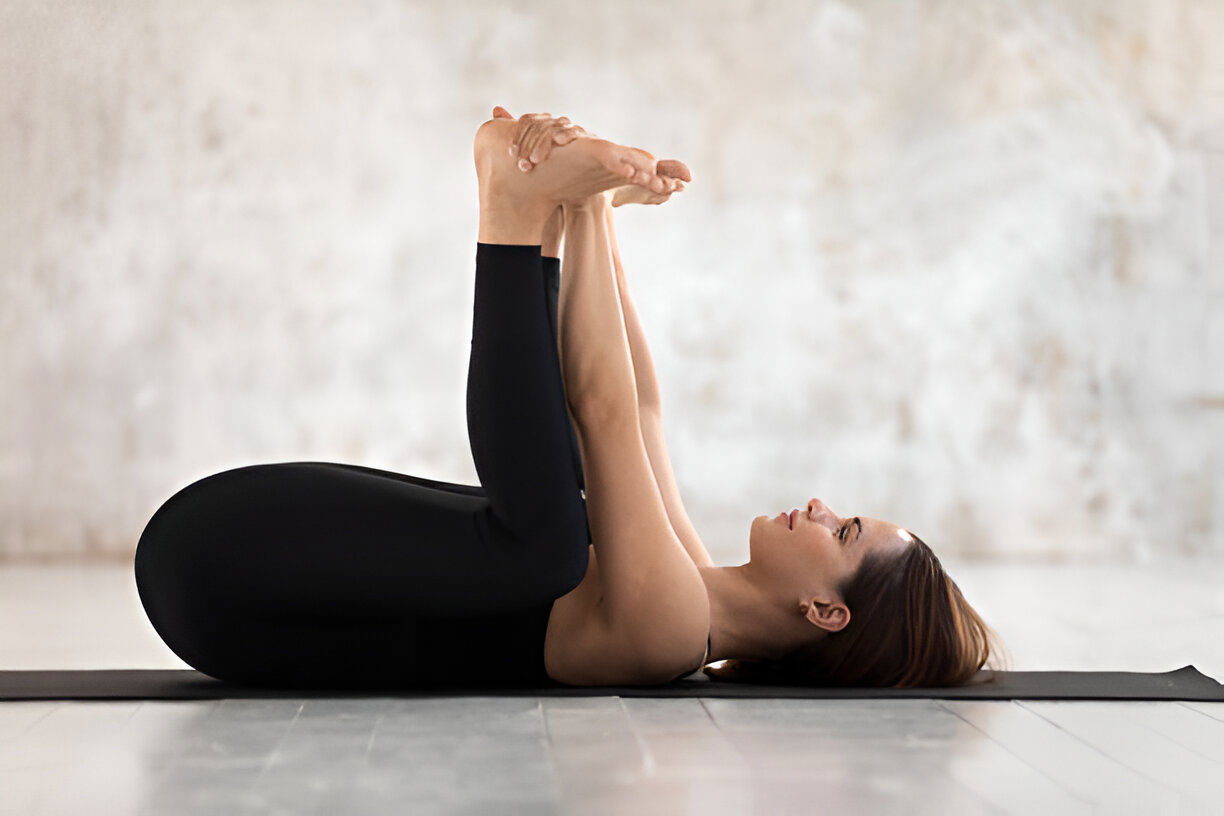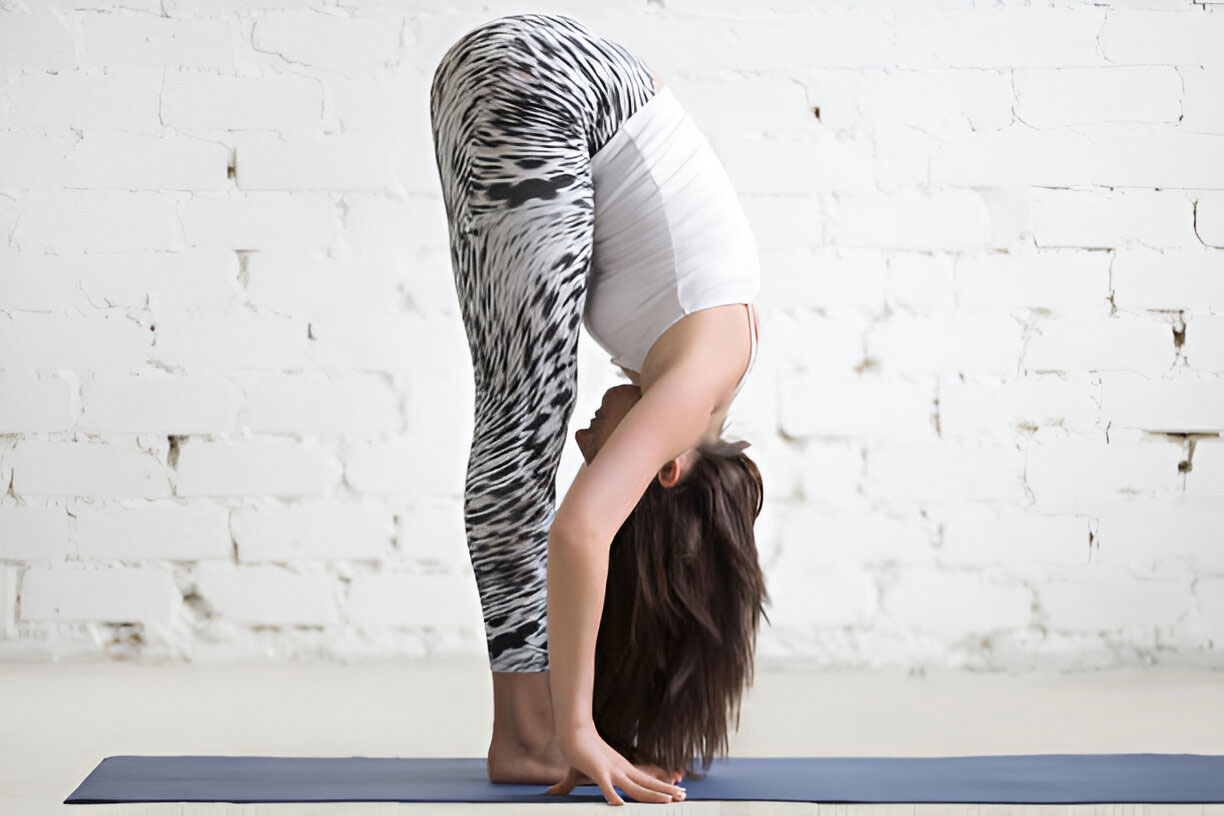Introduction Yoga Positions to Relieve Gas
Digestive discomfort and gas buildup are common issues that most people experience at some point in their lives. This discomfort can stem from a variety of factors, including poor diet, sedentary lifestyle, stress, and certain medical conditions. While medications and dietary changes are often recommended, yoga offers a natural and effective way to relieve gas and improve overall digestion.
Yoga is an ancient practice that has been celebrated for its holistic approach to health and wellness. With specific poses that target the abdominal area, yoga can help to release trapped gas, stimulate digestion, and provide relief from bloating. In this comprehensive guide, we’ll explore how yoga can be used to alleviate gas, highlight the most effective yoga poses, and provide tips for incorporating them into your daily routine.
The Science Behind Gas and Digestive Issues
Before diving into the yoga poses, it’s important to understand the root causes of gas and digestive discomfort. Gas forms in the digestive tract when your body breaks down food. This process produces gases such as carbon dioxide, methane, and hydrogen. The buildup of these gases can lead to bloating, cramping, and flatulence.
There are several common reasons why gas might accumulate in the digestive system:
- Poor Diet: Eating gas-producing foods like beans, carbonated drinks, and certain vegetables (such as cabbage and broccoli) can lead to excessive gas.
- Overeating: Consuming large meals or eating too quickly can cause air swallowing, leading to gas buildup.
- Stress: Stress and anxiety can slow down digestion, leading to gas and bloating.
- Lack of Physical Activity: A sedentary lifestyle can slow down the movement of food through the digestive tract, causing gas to accumulate.
- Medical Conditions: Certain conditions like irritable bowel syndrome (IBS), lactose intolerance, and food intolerances can contribute to excessive gas production.
Yoga addresses these issues by promoting relaxation, improving gut motility, and stimulating the digestive organs.
How Yoga Helps Relieve Gas
Yoga is an effective way to relieve gas and bloating because it targets the root causes of digestive discomfort. Here’s how:
- Stimulates Peristalsis: Peristalsis is the series of wave-like muscle contractions that move food through the digestive tract. Certain yoga poses enhance this movement, helping to release trapped gas and improve digestion.
- Massages Internal Organs: Twisting poses and forward bends compress and massage the abdominal organs, which helps release trapped gas and stimulates digestion.
- Promotes Relaxation: Stress is a major contributor to digestive issues. Yoga reduces stress by promoting relaxation through deep breathing and mindfulness, thereby easing gas-related discomfort.
- Improves Circulation: Yoga improves blood flow to the digestive organs, ensuring they function optimally. Better circulation can lead to more efficient digestion and less gas buildup.
- Encourages Mindful Eating: Yoga teaches mindfulness, which can extend to your eating habits. Eating slowly and being aware of your body’s signals can prevent overeating and reduce the chances of gas buildup.
Now, let’s explore some of the most effective yoga poses for relieving gas and improving digestion.
Yoga Poses to Relieve Gas
1. Pawanmuktasana (Wind-Relieving Pose)
Benefits:
- Releases trapped gas
- Stimulates bowel movements
- Alleviates bloating and cramps
How to Perform:
- Lie flat on your back with your legs extended.
- Inhale deeply and, as you exhale, bring your right knee toward your chest.
- Clasp your hands around your shin and gently press the knee into your abdomen.
- Hold the pose for 20-30 seconds while breathing deeply.
- Release and switch to the left leg.
- For a deeper stretch, bring both knees to your chest and hold.
Why It Works:
Pawanmuktasana directly targets gas buildup by compressing the abdomen, which helps push trapped gas out of the digestive system. It’s one of the most effective poses for immediate relief from gas and bloating.
2. Ardha Matsyendrasana (Half Lord of the Fishes Pose)
Benefits:
- Stimulates digestion
- Relieves gas and bloating
- Enhances detoxification
How to Perform:
- Sit on the floor with your legs extended.
- Bend your right knee and place your foot outside your left thigh.
- Twist your torso to the right and place your left elbow on the outside of your right knee.
- Hold the pose for 30 seconds to 1 minute while breathing deeply, then switch sides.
Why It Works:
Twisting poses like Ardha Matsyendrasana are excellent for massaging the digestive organs, stimulating digestion, and releasing trapped gas. This pose encourages the elimination of toxins and supports overall gut health.
3. Apanasana (Knees-to-Chest Pose)
Benefits:
- Relieves gas and bloating
- Stimulates bowel movements
- Eases stomach discomfort
How to Perform:
- Lie on your back with your knees bent.
- Draw your knees toward your chest and clasp your hands around your shins.
- Hold the pose for 1-2 minutes while taking deep breaths.
Why It Works:
Apanasana is a simple yet powerful pose for releasing trapped gas. The gentle compression of the abdomen helps stimulate digestion and alleviate bloating, making it a go-to pose for digestive relief.
4. Marjaryasana-Bitilasana (Cat-Cow Pose)
Benefits:
- Promotes gut motility
- Relieves gas and bloating
- Eases lower back discomfort
How to Perform:
- Start on your hands and knees in a tabletop position.
- Inhale, arch your back (Cow Pose), lifting your head and tailbone upwards.
- Exhale, round your spine (Cat Pose), drawing your belly button toward your spine.
- Continue flowing between these poses with each breath for 1-2 minutes.
Why It Works:
The rhythmic motion of Cat-Cow pose gently massages the intestines, encouraging the movement of gas through the digestive system. This pose is especially helpful for relieving tension in the lower back, which can contribute to digestive discomfort.
5. Balasana (Child’s Pose)
Benefits:
- Relieves gas and bloating
- Calms the mind and reduces stress
- Promotes relaxation and digestion
How to Perform:
- Start on your hands and knees in a tabletop position.
- Bring your big toes together and sit back on your heels.
- Extend your arms forward and rest your forehead on the floor.
- Hold the pose for 1-3 minutes, focusing on deep breathing.
Why It Works:
Child’s Pose is a restorative pose that helps relax the body while gently compressing the abdomen. The compression aids in releasing gas, while the calming effect reduces stress-related digestive issues.
6. Setu Bandhasana (Bridge Pose)
Benefits:
- Stimulates digestion
- Relieves gas and bloating
- Strengthens the core and lower back
How to Perform:
- Lie on your back with your knees bent and feet flat on the floor.
- Place your arms by your sides with palms facing down.
- Inhale and lift your hips toward the ceiling, pressing your feet into the floor.
- Hold the pose for 30 seconds to 1 minute, then slowly release.
Why It Works:
Bridge Pose gently compresses the abdominal organs, promoting digestion and relieving gas. This pose also strengthens the core muscles, which support healthy digestion and prevent bloating.
7. Supta Matsyendrasana (Supine Twist Pose)
Benefits:
- Stimulates digestion
- Relieves gas and bloating
- Eases lower back discomfort
How to Perform:
- Lie on your back with your legs extended.
- Bend your right knee and cross it over to the left side of your body, letting it rest on the floor.
- Extend your right arm out to the side and gaze toward your right hand.
- Hold the pose for 1-2 minutes, then switch sides.
Why It Works:
Supine twists are excellent for massaging the intestines, stimulating digestion, and promoting bowel movement. This pose helps release trapped gas and is particularly effective for reducing bloating.
8. Vajrasana (Thunderbolt Pose)
Benefits:
- Aids digestion after meals
- Relieves gas and bloating
- Promotes relaxation and mindfulness
How to Perform:
- Kneel on the floor with your knees together and sit back on your heels.
- Rest your hands on your thighs with palms facing down.
- Sit with a straight spine and close your eyes.
- Hold the pose for 5-10 minutes, especially after meals.
Why It Works:
Vajrasana is one of the few yoga poses that can be practiced immediately after eating. It directs blood flow to the digestive organs and can prevent gas buildup, making it an ideal pose for improving digestion and relieving bloating.
9. Paschimottanasana (Seated Forward Bend)
Benefits:
- Stimulates the digestive organs
- Relieves gas and constipation
- Calms the mind and reduces stress
How to Perform:
- Sit on the floor with your legs extended straight in front of you.
- Inhale and reach your arms overhead.
- Exhale and fold forward, reaching for your feet or shins.
- Hold the pose for 1-3 minutes, focusing on deep breathing.
Why It Works:
Paschimottanasana compresses the abdominal area, stimulating digestion and promoting the release of trapped gas. The forward bend also helps calm the mind, reducing stress-related digestive issues.
10. Ananda Balasana (Happy Baby Pose)
Benefits:
- Relieves gas and bloating
- Stretches the lower back and hips
- Calms the mind and reduces stress
How to Perform:
- Lie on your back and bring your knees toward your chest.
- Hold the outer edges of your feet with your hands.
- Gently pull your feet down toward the floor while pressing your tailbone into the mat.
- Hold the pose for 1-2 minutes while gently rocking from side to side.
Why It Works:
Happy Baby Pose is a playful yet effective pose for relieving gas. The gentle rocking motion massages the intestines, helping to release trapped gas and alleviate bloating. It’s also a great pose for stretching the lower back and hips.
11. Uttanasana (Standing Forward Bend)
Benefits:
- Stimulates digestion
- Relieves gas and bloating
- Calms the mind and reduces stress
How to Perform:
- Stand with your feet hip-width apart.
- Inhale and lengthen your spine.
- Exhale and fold forward from your hips, reaching toward the floor.
- Hold the pose for 1-3 minutes, allowing your head and neck to relax.
Why It Works:
Uttanasana increases blood flow to the digestive organs, stimulating digestion and reducing bloating. The gentle inversion also helps calm the nervous system, which is crucial for stress-related digestive issues.
12. Malasana (Garland Pose)
Benefits:
- Stimulates digestion
- Relieves gas and bloating
- Stretches the hips and lower back
How to Perform:
- Squat down with your feet slightly wider than hip-width apart.
- Bring your palms together at your chest in a prayer position.
- Press your elbows against your inner thighs, creating resistance.
- Hold the pose for 1-3 minutes while focusing on deep breathing.
Why It Works:
Malasana is a deep squat that helps release trapped gas by stimulating the digestive organs. The compression created by the pose is highly effective for relieving bloating and promoting healthy digestion.
13. Adho Mukha Svanasana (Downward-Facing Dog)
Benefits:
- Stimulates digestion
- Relieves gas and bloating
- Strengthens the core and improves circulation
How to Perform:
- Start on your hands and knees in a tabletop position.
- Lift your hips toward the ceiling, forming an inverted “V” shape.
- Press your heels toward the floor and hold the pose for 1-3 minutes.
Why It Works:
Downward-Facing Dog is a full-body stretch that helps improve circulation to the digestive organs. The inversion created by this pose also relieves pressure in the abdomen, making it easier for gas to move through the intestines.
Tips for Practicing Yoga to Relieve Gas
- Practice Consistently: For best results, aim to practice these poses daily, especially if you’re prone to gas and bloating.
- Focus on Your Breath: Deep, mindful breathing is essential for stimulating digestion and calming the nervous system.
- Avoid Large Meals Before Yoga: Practice on an empty stomach or at least 2-3 hours after eating to avoid discomfort.
- Listen to Your Body: If a pose feels uncomfortable or causes pain, modify it or skip it entirely.
- Combine with a Healthy Diet: Eating a balanced diet rich in fiber, staying hydrated, and avoiding gas-producing foods can enhance the effectiveness of your yoga practice.
Conclusion
Yoga offers a natural and effective way to relieve gas, bloating, and digestive discomfort. The poses discussed in this guide target the abdominal area, promoting digestion, releasing trapped gas, and providing relief from bloating. By incorporating these yoga poses into your daily routine, you can enjoy better digestive health and a more comfortable, gas-free life.
Whether you’re new to yoga or have been practicing for years, these poses are accessible and beneficial for everyone. With consistency, mindful breathing, and a holistic approach to diet and lifestyle, you can achieve lasting relief from gas and bloating, improving your overall well-being and vitality.

